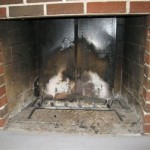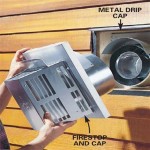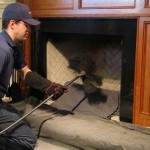How To Child Proof Fireplace Hearthstone and Patio Door
Ensuring a safe home environment for children requires meticulous attention to detail, especially when it comes to potential hazards like fireplaces, hearthstones, and patio doors. These areas, while aesthetically pleasing and functional, can pose significant risks to curious and mobile children. Effective childproofing strategies are vital to mitigate these risks and provide parents with peace of mind. The following guidance provides comprehensive methods for safeguarding these specific areas of the home.
Securing the Fireplace Hearthstone
The fireplace hearthstone, typically constructed of stone, brick, or tile, presents a hard, sharp-edged surface that can cause serious injury if a child falls against it. Mitigation strategies should prioritize cushioning the edges and preventing access to the immediate area.
Hearthstone Padding and Edge Guards: This is one of the most common and effective methods. Available in various materials, from foam to rubber, hearthstone padding is designed to absorb impact and soften sharp edges. When selecting padding, consider the thickness, density, and attachment method. Thicker, denser materials provide better protection. Secure attachment is critical to prevent the padding from being easily removed by a child. Adhesive-backed products are generally preferred, but it is important to use a high-quality adhesive that will adhere firmly to the hearthstone surface without damaging it upon removal. Consider the aesthetic impact as well; many manufacturers offer hearthstone padding in neutral colors that blend relatively seamlessly with existing décor. Installation requires careful measurement and cutting of the padding to fit the dimensions of the hearthstone. Corners and edges require particular attention, ensuring a tight, secure fit. Regular inspection of the padding is necessary to identify and address any wear and tear.
Fireplace Screens and Barriers: A physical barrier is another effective means of preventing access to the hearthstone. Fireplace screens, typically made of metal mesh, are designed to contain embers and sparks, but they also serve as a protective barrier against the hearthstone. Ensure the screen is sturdy and securely anchored to the floor or wall to prevent it from being tipped over. Consider a screen that extends beyond the edges of the hearthstone for maximum protection. Alternatively, freestanding barriers, specifically designed for child safety, can be used. These barriers are typically adjustable and can be configured to surround the fireplace completely. The key is to select a barrier that is tall enough and has slats or mesh close enough together to prevent a child from climbing over or squeezing through. Regular inspection of the barrier is crucial to ensure its integrity and stability.
Creating a Defined Play Area: Establishing a designated play area away from the fireplace can also reduce the likelihood of accidents. This involves strategically placing furniture or using playmats to define a safe zone for children, keeping them far enough away from the hearthstone to minimize the risk of falls or impacts. Consistent reinforcement of boundaries is necessary to teach children to respect the designated play area. This approach is most effective when combined with other childproofing measures, such as hearthstone padding and barriers.
Educating Older Children: While not a substitute for physical barriers, educating older children about the dangers of the fireplace and hearthstone can contribute to a safer environment. Explain the potential for injury from falling against the hard surface and teach them to avoid playing near the fireplace. Emphasize the importance of respecting the boundaries established for the play area. This educational approach is particularly effective for children who are old enough to understand and follow instructions.
Avoiding Temporary Solutions: Resist the temptation to rely on temporary or makeshift solutions, such as using pillows or blankets to cushion the hearthstone. These items are not designed for impact absorption and may not provide adequate protection. Moreover, they can easily be moved or dislodged by a child, rendering them ineffective. Invest in purpose-built childproofing products that are specifically designed to protect children from fireplace hazards.
Securing the Patio Door
Patio doors, while offering access to outdoor spaces and providing natural light, can present several safety concerns for young children. These concerns include the risk of collisions with the glass, escaping unsupervised into the yard, and manipulating the door’s locking mechanism.
Applying Safety Film: Clear safety film applied to the glass surfaces of the patio door can significantly reduce the risk of injury in the event of a collision. This film, typically made of a durable polymer, strengthens the glass and prevents it from shattering into sharp fragments. When selecting safety film, choose a product that is specifically designed for use on glass doors and windows. Ensure the film is applied evenly and securely, following the manufacturer's instructions carefully. Professional installation is recommended for optimal results. Regularly inspect the film for any signs of damage, such as tears or bubbles, and replace it as needed. This film also provides an added layer of security against forced entry, making it a worthwhile investment for overall home safety.
Installing Door Alarms: Door alarms provide an audible alert when the patio door is opened, preventing unsupervised access to the outside. These alarms can be simple battery-operated devices that attach to the door frame and door, or more sophisticated systems that integrate with a home security system. Select an alarm that is loud enough to be heard throughout the house, and position it high enough to prevent a child from disabling it. Regularly test the alarm to ensure it is functioning properly. Door alarms are particularly useful for homes with swimming pools or other potential hazards in the backyard.
Utilizing Door Handle Locks and Childproof Latches: Standard door handles can be easily manipulated by young children, allowing them to open the patio door and wander outside. Installing door handle locks or childproof latches can prevent this. Door handle locks typically consist of a plastic or metal cover that fits over the door handle, preventing it from being turned. Childproof latches, on the other hand, attach to the door frame and door, requiring a specific action to release. Choose a lock or latch that is difficult for a child to operate but easy for an adult to use. Position the lock or latch high enough to be out of reach of young children. Regularly check the lock or latch to ensure it is functioning properly.
Adjusting the Door's Closing Speed: Patio doors can pose a pinching hazard, particularly if they close quickly. Adjusting the door's closing speed can help prevent this. Many patio doors have adjustable mechanisms that allow you to control the speed at which the door slides or swings shut. Adjust the closing speed to be slow enough to allow a child to safely move their fingers or limbs out of the way. Regularly check the closing speed to ensure it remains at the desired setting.
Using Door Stops and Stoppers: Strategically placed door stops and stoppers can prevent the patio door from slamming shut, reducing the risk of injury. Door stops are typically wedge-shaped devices that are placed under the door to prevent it from moving. Door stoppers, on the other hand, attach to the door frame and prevent the door from swinging too far open or closed. Choose door stops and stoppers that are made of durable materials and are large enough to be effective. Regularly check the door stops and stoppers to ensure they are in good condition and are properly positioned.
Landscaping for Safety: Consider modifying the landscaping around the patio door to create a natural barrier and deter children from approaching the door unsupervised. Planting thorny bushes or dense shrubbery near the door can make it less appealing for children to explore. Avoid placing climbing structures or other objects that could allow a child to reach the door handle. Regularly maintain the landscaping to ensure it remains effective in deterring children.
General Childproofing Considerations
Beyond the specific measures for the fireplace hearthstone and patio door, several general childproofing considerations are essential for creating a safe home environment.
Regular Inspections and Maintenance: Conducting regular inspections of all childproofing measures is crucial to ensure their ongoing effectiveness. Check hearthstone padding for wear and tear, door alarms for battery life, and door locks for proper function. Address any issues promptly to maintain a consistently safe environment. Maintenance routines should be established to ensure the longevity and reliability of all childproofing equipment.
Consistent Supervision: Even with the most comprehensive childproofing measures in place, consistent supervision is essential. Childproofing is not a substitute for attentive parental oversight. Actively monitor children's activities, particularly in areas with potential hazards. Reinforce boundaries and safety rules consistently. This approach combines proactive prevention with responsive intervention.
Age-Appropriate Childproofing: Childproofing needs to evolve as children grow and develop new skills. What is effective for a toddler may not be sufficient for a preschooler. Regularly reassess the home environment and adapt childproofing measures to address the child's changing abilities and developmental stage. This dynamic approach ensures that the home remains safe and secure as the child matures.
First Aid Preparedness: Despite best efforts, accidents can still happen. Being prepared with a well-stocked first aid kit and knowledge of basic first aid procedures is crucial. Keep the first aid kit readily accessible and regularly check its contents to ensure freshness. Familiarize yourself with common childhood injuries and how to treat them. This preparedness can minimize the impact of accidental injuries and provide reassurance in emergency situations.
Creating a Learning Environment: Involve children in the learning process by teaching them about safety hazards and how to avoid them. Explain the potential dangers of the fireplace, hearthstone, and patio door. Encourage them to ask questions and express concerns. This interactive approach fosters a sense of responsibility and empowers children to make safe choices. This approach is not a replacement for physical barriers or consistent supervision, but it does encourage children to be active participants in their own safety.
By implementing these comprehensive strategies, parents and caregivers can significantly reduce the risks associated with fireplaces, hearthstones, and patio doors, creating a safer and more secure home environment for children. This proactive approach helps give parents and guardians the peace of mind that comes with knowing that they are doing everything possible to protect their children.

Fireplace Gate Baby Proof Your Hearth
Baby Proof Brick Fireplace Hot

Cardinal Gates Fireplace Cushion Hearth Pads Brown Spk Br C The Home Depot

Jamboo Creations Hearthsoft Fireplace Childproofing Cover Review

Jamboo Creations Hearthsoft Fireplace Childproofing Cover Review

5 Steps To Childproof Pet Proof Your Fireplace We Love Fire

Fireplace Gate Baby Proof Your Hearth

Jamboo Creations Hearthsoft Fireplace Childproofing Cover Review

Benefits Of Bi Fold Glass Fireplace Doors We Love Fire

Hearthstone Waitsfield Dx Cast Iron Direct Vent Gas Stove
Related Posts








